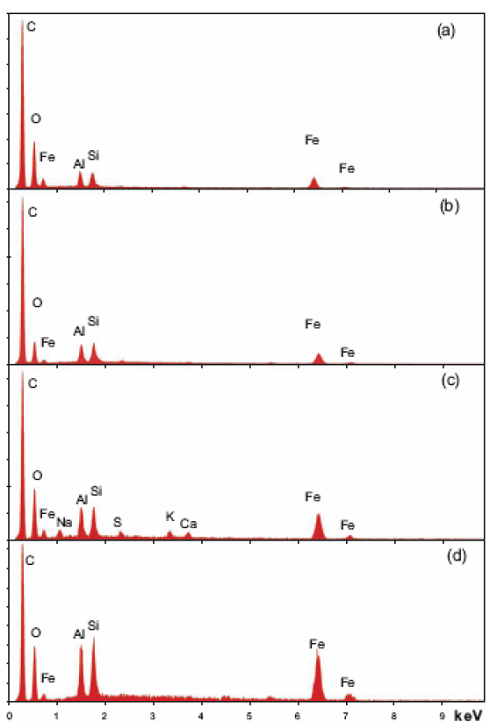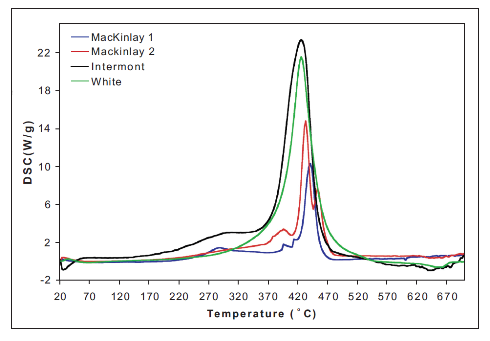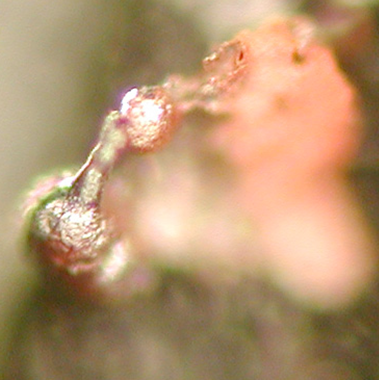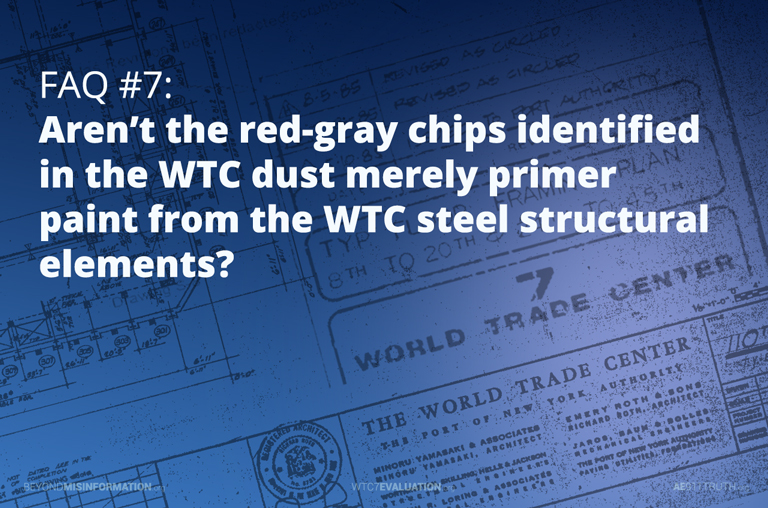The thermal tests on the red-gray chips revealed that when they are ignited at around 430ºC, they create molten iron microspheres as a byproduct. Since iron does not melt until it reaches approximately 1538ºC, this means that a high-temperature chemical reaction occurred. Such volatile reactivity makes this type of material extremely dangerous, disqualifying it from ever being used as primer paint.
HIGH LEVELS OF ZINC, CHROMIUM, AND MAGNESIUM IN WTC PAINT ARE BARELY FOUND IN RED-GRAY CHIPS
By AE911Truth Staff
Editor’s Note: The preliminary results of a new study of the red-gray chips, commissioned by Chris Mohr, a supporter of the official NIST reports about the destruction of the World Trade Center skyscrapers, and authored by Dr. James Millette, have recently been released. They seem to confirm that the composition of the red-gray chips does not match the formula for the primer paint used on the WTC steel structure. Look for a critique of Millette’s study in next month’s Blueprint newsletter.
 These XEDS charts show the chemical properties of four red-gray chips after analysis by Dr. Niels Harrit and other scientists. No significant quantities of zinc, chromium or magnesium are observed, which are vital components of the WTC primer paint.
These XEDS charts show the chemical properties of four red-gray chips after analysis by Dr. Niels Harrit and other scientists. No significant quantities of zinc, chromium or magnesium are observed, which are vital components of the WTC primer paint.
Some defenders of the official 9/11 story have claimed that the red-gray chips of thermitic material identified in the World Trade Center dust by chemist Dr. Niels Harrit, Ph.D., Dr Steven Jones, Ph.D., and other scientists are simply remnants of the rust-proofing primer paint that was applied to the steel structure of the WTC skyscrapers during their construction. However, scientific evidence gathered by both the National Institute of Standards and Technology (NIST) and Harrit’s team of scientists clearly shows that this claim is false, since the properties of the primer paint are strikingly different from those of the red-gray chips.
First of all, several key ingredients of the primer paint are not present in the composition of the red-gray chips. According to NIST, the type of primer paint used on the WTC steel columns contains substantial levels of zinc, chromium, and magnesium. However, the X-ray Energy Dispersive Spectroscopy (XEDS) analysis of the red-gray chips performed by Harrit and others showed no significant amounts of zinc, chromium, or magnesium.
Based on this data alone, we can already conclude that the red-gray chips are not primer paint.
Yet there are still other important differences that reinforce the fact that these two materials are not the same.
In one of the tests performed by Harrit and his fellow scientists, a red-gray chip was soaked in methyl ethyl ketone (MEK), which is a paint solvent. While paint dissolves within a few hours upon immersion in this solvent, the red-gray chip did not dissolve; it remained in a hardened state after being soaked for 55 hours.
 As shown in this chart, all four red-gray chips that were tested ignited at temperatures around 430ºC, far below the temperature at which WTC primer paint burned.
As shown in this chart, all four red-gray chips that were tested ignited at temperatures around 430ºC, far below the temperature at which WTC primer paint burned.
The thermal properties of the red-gray chips and primer paint are also highly dissimilar. Thermal analysis of the red-gray chips has shown that they ignite at approximately 430ºC.
In contrast, tests on the primer paint performed by NIST and recorded in NIST's report NCSTAR 1-3C Appendix D (pages 440 and 442) demonstrated that it can reach temperatures exceeding 650ºC without burning. Since primer paint is primarily a ceramic material, it is chemically stable at temperatures up to 800ºC.
In addition, the thermal tests on the red-gray chips revealed that when they are ignited at around 430ºC, they create molten iron microspheres as a byproduct. Since iron does not melt until it reaches approximately 1538ºC, this means a high-temperature chemical reaction occurred. Such volatile reactivity makes this type of material extremely dangerous, disqualifying it from ever being used as primer paint.
 This image shows a red-gray chip after it had been partially ignited. The gray iron-rich spherical particles, which were found in the WTC dust documented by USGS and RJ Lee & Associates, are evidence of a high-temperature chemical reaction.
This image shows a red-gray chip after it had been partially ignited. The gray iron-rich spherical particles, which were found in the WTC dust documented by USGS and RJ Lee & Associates, are evidence of a high-temperature chemical reaction.
Conversely, the documented chemical and thermal properties of the red-gray chips confirm that they are thermitic material. The chemical composition of these chips includes sizeable quantities of the key elements of thermite (iron, oxygen, and aluminum), and the high-temperature reactions that occurred when the chips were ignited verifies that they are indeed thermitic in nature.
This sophisticated incendiary material has been developed in the most advanced laboratories in the world, and is designed to blast through steel, a result that cannot be produced by jet fuel or office fires. An independent, comprehensive, fully resourced and unimpeachable investigation is long overdue to determine who placed this destructive material in the WTC skyscrapers and bring them to justice.






